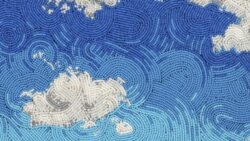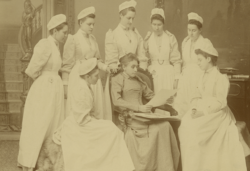The Canadian War Museum has unveiled a new exhibition focusing on war through the eyes of women artists.
Outside the Lines showcases the work of 52 women artists and features more than 70 works of art including paintings, sculptures, drawings, photographs, film and textiles.
The exhibition is divided into four zones which takes visitors on a journey from the 19th century to today. It begins with works from the 1800s, followed by World War art, then art depicting the Cold War and concludes with contemporary works.
“Outside the Lines is a fresh and engaging look at this country’s military history through the eyes of women,” said James Whitham, the museum’s director general.

[Image courtesy Canadian War Museum]
“Women have traditionally been overlooked in accounts of wars. With this important exhibition, we are proud to be shining a much-deserved spotlight on women artists and their perspectives.”
The majority of the art comes from the Canadian War Museum’s Beaverbrook Collection of War Art, the second largest collection of war art in the world.
Works displayed offer viewers a range of views on conflict and life during wartime by female artists, and highlights artists from the Canadian Armed Forces Civilian Artists Program, which sent civilian artists to work alongside serving members to document and depict military life through art.
It also deals with some difficult subjects. For example, drawings by the Beothuk artist Shanawdithit show the destruction of the Beothuk community. And the internment of Japanese Canadians is shown in paintings by Lillian Yano Blakey.


American draft resisters talk about coming to Canada to escape the Vietnam War in an experimental film by Joyce Wieland and an all-Black battalion is remembered in a striking quilt. And there are even some knitted landmines on display.
The final zone of the exhibit features a contemporary work produced by the war museum’s first artist-in-residence, Elise Lavallee Findlay.
The exhibit will be open until Jan. 5.




